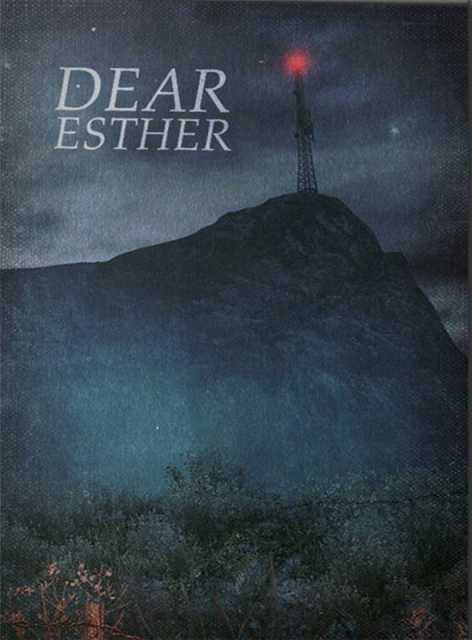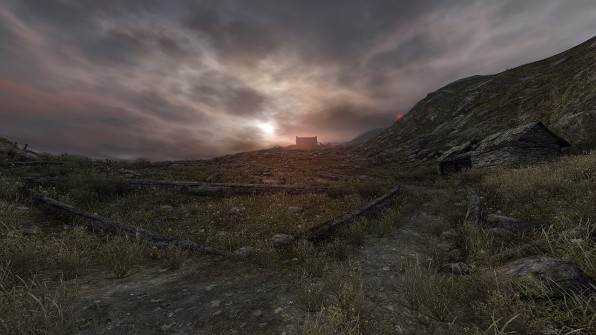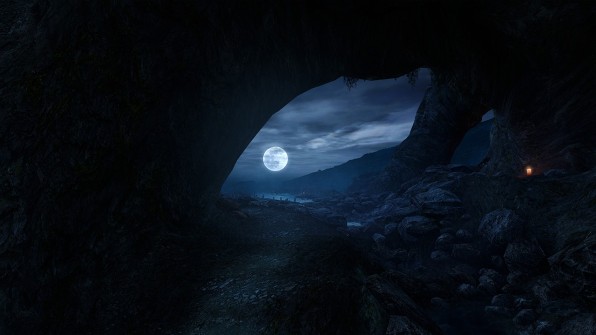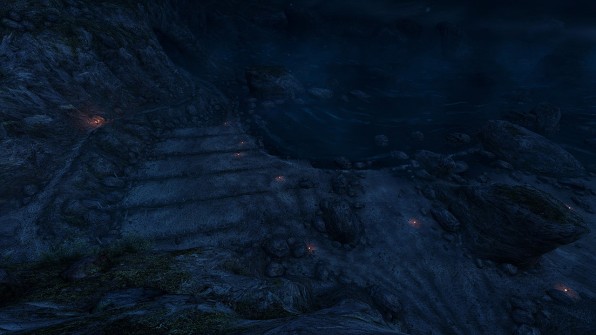An experiment in interactive storytelling
Dear Esther. I sometimes feel as if I’ve given birth to this island. Somewhere, between the longitude and latitude a split opened up and it beached remotely here. No matter how hard I correlate, it remains a singularity, an alpha point in my life that refuses all hypothesis. I return each time leaving fresh markers that I hope, in the full glare of my hopelessness, will have blossomed into fresh insight in the interim.
Dear Esther is one of these titles that defy our common conceptions about what video games should be. It can be considered an anti-game, or perhaps a game that transcends the genre. Personally I perceive it as an amazing experiment in interactive storytelling.
Released on February 14th 2011, Dear Esther is a re-make of a free Half-Life mod from a few years back. Although it utilizes Valve’s Source engine and a first-person perspective, it has very little else in common with other games running on this technology. There are no guns, no cover system, no sprint button. You find yourself on the shore of a cold English island and are left to roam around exploring the deserted environment in search of a better understanding of who you are, why are you there and what has happened to you in the past.
The story is delivered in scattered pieces of narration triggered as you explore the environment bit by bit. It never really paints a full picture nor provides any definite answers to the questions you may have. Instead, it masterfully sets the mood and deals with emotions rather than with absolutes.
Visually, Dear Esther is a stunning piece. Just like the AAA titles created by Valve, it manages to utilize the Source engine to its full potential, proving once again something I have been always claiming about this particular piece of tech. The Source engine is not nearly as powerful as some of the contemporary heavyweights such as CryEngine or Unreal. It lacks many of the bells and whistles the others have, pushes fewer polygons per frame and often has to resolve into sprite trickery.
It is, however, an engine that does wonders when put in hands of a skilled art director. Based on the concept art by Ben Andrews and designed by Robert Briscoe, the game is a true work of art. It utilizes color palettes that always border on the verge of photo-realism, while maintaining artistic composition and flow. It truly pulls the player in and fleshes out a tactile, believable world filled with immaculate attention to detail.
From the cold afternoon sights of the opening chapter, through stunning cave system filled with bioluminescent flora to the full-mooned night in the conclusion, every step of your journey is a true feast for the eyes. During my first two-hour playthrough I have accumulated a total of nearly 200 screenshots in an attempt to capture and own a piece of this experience.
It is impossible to talk about the story of the game without spoiling the experience to those who haven’t yet played through this title. It will unfold to you at perfectly timed moments as you explore the island, providing the narrative context to the environments you visit. A by-line provided by the studio on the official site, however, manages to set the tone and provide you with an idea of what Dear Esther is about: “A deserted island… a lost man… memories of a fatal crash… a book written by a dying explorer.”
If I was to draw comparisons to other titles, the two that come to mind are “The Graveyard” by Tale of Tales and “Trauma” by Krystian Majewski. By the sheer amount of work put into it by the developers, Dear Ester reaches far beyond the other two games in terms of the experience it provides as well as audio-visual fidelity.
As many innovative works of art in the past, Dear Esther immediately polarized the audience – so you may think twice before purchasing it. For me it was a no-brainer and would wholeheartedly recommend this title to anyone looking for something different in video games. The $10 price should not be considered as the “game’s price tag”, but rather as an “admission ticket” to the interactive installation/experience.
Developed by the Chinese Room, Dear Esther is available for purchase for PC on Steam. According to the offical website, the official game soundtrack by Jessica Curry will be available soon.
- Official website
http://dear-esther.com/ - Steam page
http://store.steampowered.com/app/203810/
This review has been originally published on QubaHQ.





0 Comments